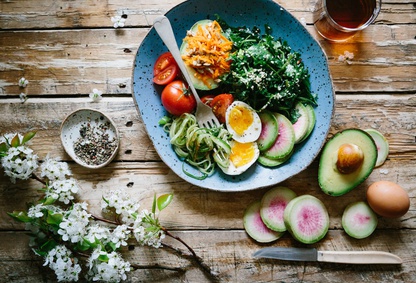Eating properly in 2017 can sometimes become a real obstacle course. Between the false information conveyed by the net or by a lack of knowledge regarding a certain dietetic hygiene, we can easily not know what food to put in our plate.
Moreover, many movements are swarming and often appear as the ideal diet, mainly on social networks but also through thematic books or conferences given here and there in the world. What about raw food, vegetarianism, veganism, paleo diet and so on? How do we know what is good for us? How to adopt the right attitude towards your plate?
Finally....What to eat?
With too much information, the population could tend either to fall into nutritional extremes that would ultimately prevent them from providing their bodies with the nutrients they need, or to deviate from all these food "trends" and get carried away by "junk food. Of course, between the two, there are those who try to find a balance and a dietary harmony ideal for their health. A sometimes complicated battle between misinformation and truth.
Generally, we want to provide our body with the right nutrients by providing vitamins or trace elements essential to the proper functioning of our body, but what about amino acids?

What is an amino acid?
Amino acids are the result of the decomposition of a protein, they are their structure. Therefore, they result from the digestion of our daily food intake. The most important amino acids are 22, 13 of which can be synthesized by the body, usually the liver. The other 9 are so-called essential amino acids (EAA), which means that they cannot be synthesized by the body and must be provided by the daily diet.
The 9 essential amino acids are :
- Histidine: in oats, rice, poultry, legumes, etc.
- Isoleucine: in almonds, peanuts, whole grains, fish, animal meats, chickpeas, etc.
- Leucine: in almonds, mushrooms, whole grains, fish, animal meats, legumes, etc.
- Lysine: in yeast, potatoes, soy, animal meats, etc.
- Methionine: in avocado, beans, sunflower seeds, lentils, etc.
- Phenylalanine: in wheat germ, seeds, eggs, fish, legumes, etc.
- Threonine: in wheat germ, seeds, eggs, fish, etc.
- Tryptophan (5-http): in almonds, peanuts, brown rice, cheese, etc.
- Valine: in almonds, eggs, whole grains, fish, animal meats, etc.
This list of foods is by no means exhaustive, but it does represent the importance of dietary diversity. In addition, all amino acids are essential to the health and proper functioning of the body. Indeed, each molecule will have its precise function and interest in our body. In case of deficiency, consequences exist and can be variable: skin problems, anxiety, depression, etc. ....
If animal proteins are composed of all the amino acids essential to the body, this will not be the case with vegetable proteins. These (chickpeas, lentils, beans, soya, ...) as part of a vegetarian or vegan diet (or simply for the sake of taste) must be combined with whole grains because this is the only way to obtain a complete supply of amino acids.
With a little imagination and culinary research, it is possible to enjoy the table while providing your body with the nutrients it needs. In case of medical deficiency, an external contribution is possible. In such a case, the L-levorotatory form of the amino acid will be the most bioavailable to the body - except for methionine and phenylalanine.



